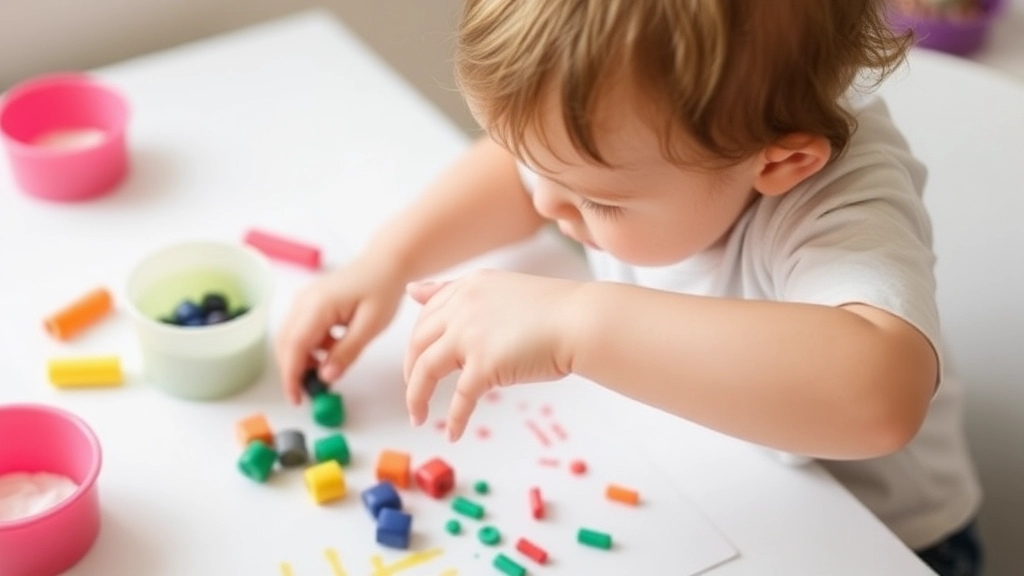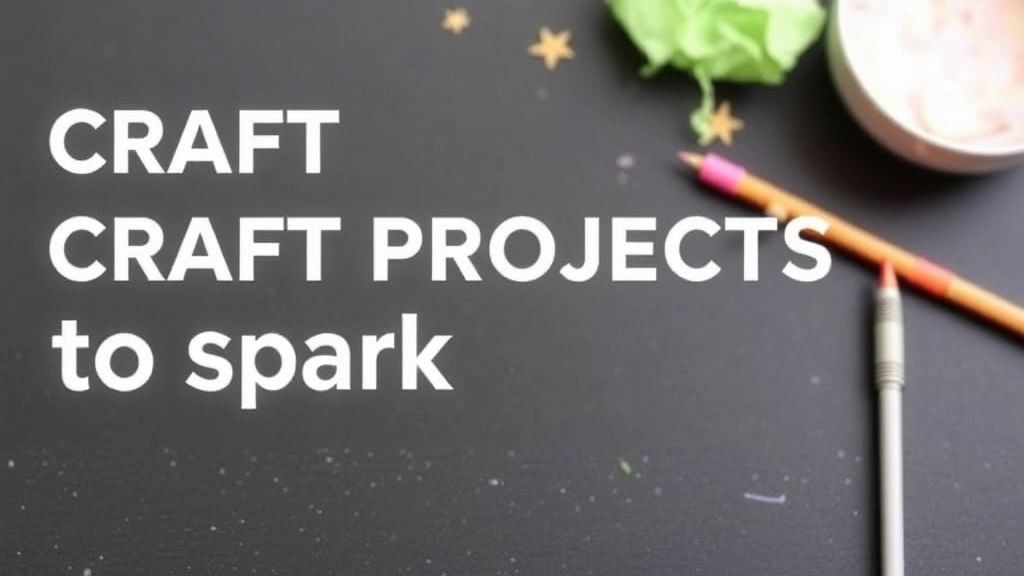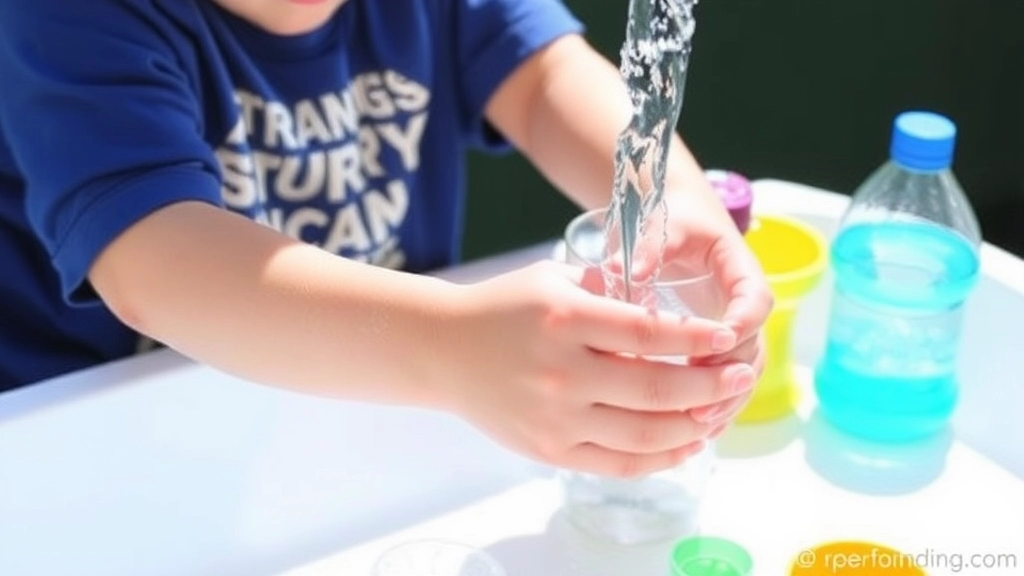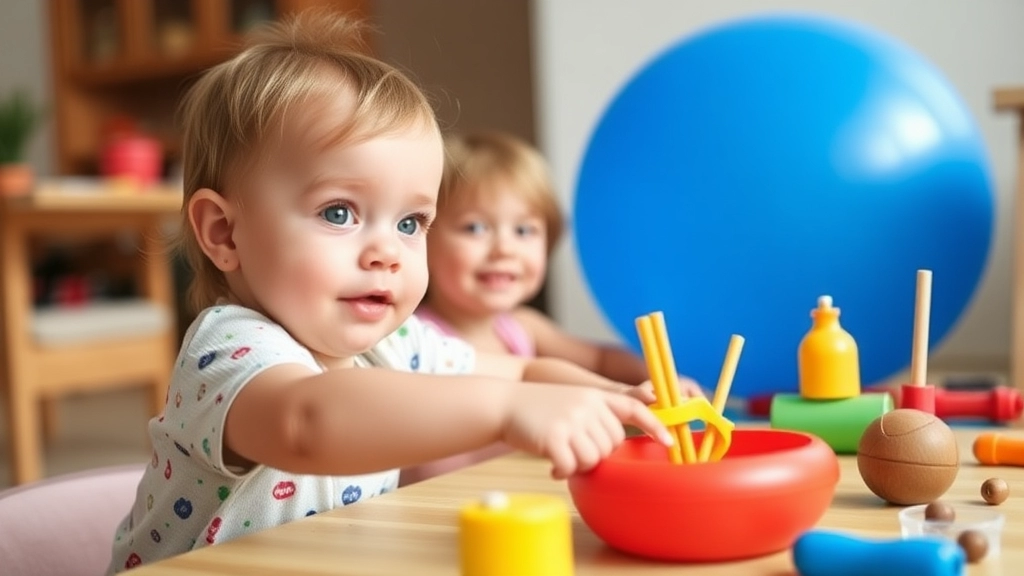Welcome to the Ultimate Guide on Creating a Busy Toddler Summer Camp At Home!
Ever wondered how to keep your toddlers entertained all summer without losing your sanity? This article will walk you through planning your at-home summer camp, offering creative activity ideas, outdoor adventures, craft projects, educational games, DIY water play, themed weeks, and even tips for managing multiple children. Let’s dive into a summer full of fun and learning!
Planning Your At-Home Summer Camp
From setting up a structured yet flexible schedule to incorporating quiet time and relaxation, this guide covers all bases. You’ll discover how to keep your kids engaged with healthy snacks and meal planning, and find out how to turn your backyard into a mini water park.
Tips for a Memorable Summer Camp Experience
Whether you’re a seasoned parent or new to the game, these tips and real-life examples will help you create a memorable and manageable summer camp experience at home. Let’s get started!
Planning Your At-Home Summer Camp
Ever wondered how to keep your toddlers entertained all summer without losing your sanity? You’re not alone. Planning an at-home summer camp might sound like a daunting task, but it’s totally doable and can be a blast for both you and your kids. Let’s break it down.
Why even consider an at-home summer camp? Maybe you’re tired of the same old routines, or perhaps you’re looking to save some money. Whatever the reason, creating a structured yet flexible plan can make your life easier and your kids’ summer more memorable.
Steps to Get Started
- Set Clear Goals: What do you want to achieve? Think about your kids’ interests and developmental needs.
- Physical Activity: Are they bouncing off the walls? Plan for outdoor adventures.
- Creativity: Got a mini Picasso? Stock up on craft supplies.
- Learning: Want to sneak in some education? Educational games are your friend.
- Create a Schedule: Flexibility is key, but having a loose structure helps.
- Morning Activities: Start with high-energy activities like outdoor play.
- Midday Crafts: Transition into quieter, creative activities.
- Afternoon Learning: Wrap up with educational games and wind-down time.
- Gather Supplies: Make a list of everything you’ll need.
- Craft Supplies: Think paper, glue, markers, and paint.
- Outdoor Gear: Balls, bikes, and water play items.
- Educational Tools: Books, puzzles, and learning apps.
- Involve the Kids: Get their input! What activities excite them? This makes them more engaged and less likely to get bored.
Real-Life Example
Last summer, I decided to try this with my two toddlers. We kicked off with a “Nature Week.” Every morning, we explored a different part of our garden, looking for bugs and plants. Afternoons were for craftingâthink leaf rubbings and painted rocks. By the end of the week, not only were the kids more aware of nature, but they also had a bunch of new art to show off.
Internal Linking Opportunities
As you plan, don’t forget to check out our sections on Creative Summer Camp Themes and Summer Camping Essentials for more detailed suggestions. And if you’re looking for ways to keep it educational, our Creative Arts and Crafts Ideas section has you covered.
Creative Activity Ideas for Toddlers

Ever find yourself thinking, “How on earth do I keep my toddler entertained all summer?” You’re not alone.
Let’s dive into some creative activity ideas for toddlers that are easy, fun, and will keep your little one busy.
1. Sensory Play
Toddlers love to explore with their senses. Set up a sensory bin with rice, beans, or sand. Throw in some scoops, cups, and toys. Watch them dig, pour, and discover.
2. Painting Without the Mess
Worried about the mess? Try water painting. Grab a bucket of water and some paintbrushes. Let your toddler “paint” the fence, patio, or even the sidewalk. No clean-up required!
3. DIY Play Dough
Making play dough at home is a game-changer. Mix flour, salt, water, and a bit of oil. Add food colouring for fun. Knead it together, and you’ve got hours of squishy fun.
4. Story Time with a Twist
Reading is great, but let’s make it interactive. Create a story basket. Fill it with props related to the story. Let your toddler act out scenes as you read.
5. Nature Collages
Head outside and collect leaves, flowers, and twigs. Bring them back and create a nature collage. Stick them onto paper with glue. Instant art and a fun way to explore the outdoors.
6. Indoor Obstacle Course
Rainy day? No problem. Set up an indoor obstacle course using pillows, chairs, and blankets. Crawl under tables, jump over cushions. It’s a great way to burn off energy.
7. Music and Movement
Toddlers love music. Create a dance party. Play their favourite songs and dance around the living room. Add some instruments like tambourines or shakers for extra fun.
8. Simple Science Experiments
Introduce them to science early. Try the classic baking soda and vinegar reaction. It’s safe, easy, and they’ll be amazed by the fizz.
9. Building with Blocks
Blocks are timeless. Set up a block-building challenge. See who can build the tallest tower or the most creative structure.
10. Imaginative Play
Encourage their imagination. Create a pretend play area. Set up a mini kitchen, a doctor’s office, or a shop. Let them role-play and create their own little world.
11. Art with Nature
Painting rocks is a hit. Collect some smooth stones. Use non-toxic paint to decorate them. They can make great garden ornaments or gifts.
12. Simple Puzzles
Puzzles are fantastic for developing problem-solving skills. Start with simple puzzles with large pieces. Gradually increase the difficulty as they get better.
Outdoor Adventures and Play
Ever found yourself staring at your toddler, thinking, “How on earth can I keep you entertained all day?” Well, you’re not alone. Outdoor adventures and play can be your saving grace. Let’s dive into some practical, fun-filled ideas that will keep your little ones busy and happy.
Why Outdoor Play Matters
Outdoor play isn’t just about burning off energy. It’s about exploration, creativity, and learning. Kids learn best when they’re having fun, and the outdoors is the perfect classroom. Plus, it’s a great way to pry them away from screens.
Easy and Engaging Outdoor Activities
Nature Scavenger Hunt
- Create a list of items for your toddlers to find: leaves, rocks, flowers, and sticks.
- Hand them a small basket or bag to collect their treasures.
- Celebrate their finds with a small reward or a fun story about each item.
Obstacle Course
- Use household items like hula hoops, cones, and ropes.
- Set up a course in your garden or local park.
- Encourage your kids to run, jump, and crawl through the course.
- Time them and see if they can beat their own record.
Water Play
- Set up a simple water table with cups, spoons, and small toys.
- Create a splash zone with a sprinkler or paddling pool.
- Encourage imaginative play by adding bubbles or food colouring to the water.
Garden Camping
- Pitch a tent in your garden.
- Have a picnic with sandwiches and juice.
- Read stories or play games inside the tent.
- Spend the night if you’re feeling adventurous!
Making the Most of Local Parks
Local parks are gold mines for outdoor play. Here’s how you can make the most of them:
- Playgrounds: Let your kids explore different play structures. It’s great for their motor skills.
- Open Spaces: Bring a ball, frisbee, or kite. Open spaces are perfect for running and playing.
- Nature Trails: Go for a walk and talk about the different plants and animals you see.
Safety First
Outdoor play is fantastic, but safety is paramount. Here are some quick tips:
- Always supervise your children.
- Apply sunscreen and wear hats.
- Stay hydrated with plenty of water.
- Be aware of your surroundings, especially in public places.
Real-Life Example
Last summer, I set up a simple obstacle course in our garden. My toddler was thrilled, and it became a daily ritual. We saw improvements in her coordination and confidence. Plus, it was a fantastic way to bond and enjoy the fresh air.
Craft Projects to Spark Imagination

Ever find yourself wondering how to keep your kids entertained and off screens?
Craft projects can be your secret weapon.
Let’s dive into some fun, easy, and creative ideas that will get your toddlers’ imaginations running wild.
Why Craft Projects?
Crafts are more than just a way to pass the time.
They help with:
- Fine motor skills
- Creativity
- Problem-solving
And let’s be real, they also give you a breather.
Easy Craft Ideas
Paper Plate Animals
- Grab some paper plates.
- Get markers, glue, and googly eyes.
- Let your toddler create their favourite animals.
Handprint Art
- Paint their hands.
- Press them onto paper.
- Turn those prints into anything—flowers, trees, or even dinosaurs.
DIY Playdough
- Mix flour, salt, water, and food colouring.
- Let them mould and shape it.
- Bonus: It’s non-toxic and easy to clean up.
Get Messy, It’s Okay
Crafts can get messy, but that’s part of the fun.
Lay down some old newspapers or a plastic tablecloth.
Trust me, the clean-up will be worth the joy on their faces.
Seasonal Crafts
Summer
- Seashell painting
- Ice cream stick puppets
Autumn
- Leaf collages
- Pumpkin decorating
Winter
- Snowflake cut-outs
- Homemade Christmas ornaments
Spring
- Flower crowns
- Egg carton caterpillars
Real-Life Example
Last summer, I tried the paper plate animals with my kids.
They were so engrossed, they didn’t even ask for the iPad.
We ended up with a zoo of paper animals that decorated our living room for weeks.
Tips for Success
- Prep in advance: Gather all materials before you start.
- Keep it simple: Don’t overcomplicate the projects.
- Stay involved: Help them with tricky parts but let them take the lead.
Educational Games and Learning Opportunities
Ever wondered how to keep your kids learning and entertained without them even realising it? Dive into these educational games and learning opportunities that are not only fun but also sneak in a bit of learning. Trust me, it’s easier than you think to turn playtime into brain-boosting sessions.
Why Educational Games?
Let’s be real. Kids have a short attention span. You want them to learn, but they just want to have fun. So why not combine both? Educational games are the perfect blend of entertainment and learning. They keep your little ones engaged while teaching them new skills.
Types of Educational Games
Puzzle Games:
- Jigsaw Puzzles: Great for developing spatial awareness and problem-solving skills.
- Sudoku for Kids: Simplified versions can help with number recognition and logical thinking.
Memory Games:
- Matching Cards: Improves memory and concentration.
- Simon Says: Enhances listening skills and memory recall.
Board Games:
- Scrabble Junior: Perfect for building vocabulary.
- Monopoly Junior: Teaches basic math and money management.
Learning Opportunities
Science Experiments:
- Simple Volcano: Use baking soda and vinegar to create a mini-eruption. It’s a fun way to introduce basic chemistry.
- Plant Growing: Teach kids about biology by planting seeds and watching them grow.
Reading Time:
- Storytelling: Pick books that are both entertaining and educational. Discuss the story and ask questions to improve comprehension.
- Interactive E-books: Many e-books come with games and activities that make reading more engaging.
Maths Fun:
- Counting Games: Use everyday objects like fruits or toys to make counting fun.
- Math Apps: There are plenty of apps that turn maths into a game. They’re interactive and keep kids hooked.
Incorporating Technology
Educational Apps:
- Khan Academy Kids: Offers a range of subjects and interactive activities.
- ABCmouse: Comprehensive curriculum for young learners.
Online Resources:
- YouTube Channels: Channels like “Crash Course Kids” offer educational content in a fun format.
- Interactive Websites: Sites like “Funbrain” provide games that cover various subjects.
Tips for Success
- Mix It Up: Don’t stick to one type of game. Rotate between different activities to keep things fresh.
- Set a Schedule: Allocate specific times for educational games. Consistency helps in forming a routine.
- Get Involved: Play along with your kids. Your involvement makes the activity more enjoyable and educational.
- Observe and Adapt: Pay attention to what your child enjoys and tailor the games accordingly.
- Reward System: Use a reward system to motivate your kids. Small rewards can go a long way in keeping them interested.
Real Stories
I remember when I first introduced my niece to a simple science experiment. We made a baking soda volcano, and she was absolutely fascinated. She kept asking questions, and it turned into a mini-lesson on chemical reactions. The best part? She didn’t even realise she was learning.
Or take my friend’s son who hated maths. We started playing Monopoly Junior, and suddenly, he was all about counting money and making transactions. It was a game-changer, literally.
For more inspiration on keeping kids engaged, check out our top summer camp board games for all ages. If you’re looking for fun and educational summer options, explore our guide on summer history camps for kids.
DIY Water Play Activities

Ever wondered how to keep your kids cool and entertained during those scorching summer days?
DIY water play activities are your answer.
They’re easy, fun, and can turn your backyard into a mini water park.
Why DIY Water Play?
Kids love water.
It’s refreshing, exciting, and perfect for sensory play.
Plus, it’s a great way to beat the heat without leaving your home.
Simple Water Play Ideas
Here are some simple yet engaging water activities you can set up in no time:
1. Water Balloon Toss
- Fill up some water balloons.
- Pair up the kids.
- Let them toss the balloons back and forth.
- The goal? Don’t let the balloon burst!
2. DIY Sprinkler
- Grab an old plastic bottle.
- Poke some holes in it.
- Attach it to your garden hose.
- Voilà! Instant sprinkler fun.
3. Sponge Relay Race
- Get a few sponges and buckets.
- Fill one bucket with water.
- Place an empty bucket at the other end.
- Kids soak the sponge, run to the empty bucket, and squeeze out the water.
- First one to fill their bucket wins!
4. Ice Block Treasures
- Freeze small toys in a block of ice.
- Give the kids tools to chip away at the ice.
- It’s like a mini archaeological dig, but way cooler.
Safety First
Remember, safety is key.
Always supervise water play activities.
Make sure the play area is slip-proof.
And, keep an eye on the weather—no one wants a sunburn.
Why It’s Worth It
DIY water play isn’t just fun.
It’s a fantastic way to develop motor skills, encourage teamwork, and spark creativity.
Plus, it’s a break from screens.
Themed Weeks for Structured Fun
Ever wondered how to keep your kids entertained all summer without losing your mind? Themed weeks might be your answer. It’s a simple yet effective way to add structure to your at-home summer camp, and trust me, it can make a world of difference.
Why Themed Weeks Work
Themed weeks provide a clear focus for activities, making it easier to plan and execute. Plus, kids love the anticipation of what’s coming next. It keeps things fresh and exciting without the constant scramble for new ideas.
How to Plan Your Themed Weeks
Start by picking themes that resonate with your kids. Here are some no-brainer ideas:
- Nature Week: Explore the outdoors, collect leaves, and do simple science experiments.
- Art Week: Dive into painting, drawing, and craft projects.
- Science Week: Conduct fun experiments, build simple machines, and learn about the stars.
- Adventure Week: Set up treasure hunts, obstacle courses, and camping in the backyard.
Breaking Down the Week
Each day should have a mix of activities that align with the theme. Here’s a quick breakdown to keep it manageable:
- Monday: Introduction to the theme. Simple activities to get everyone excited.
- Tuesday: Hands-on projects. Think crafts, experiments, or building something.
- Wednesday: Outdoor adventures. Get outside and explore.
- Thursday: Quiet time activities. Reading, puzzles, or educational games.
- Friday: Wrap-up and showcase. Let the kids present what they’ve done or learned.
Example: Nature Week
Let’s take Nature Week as an example. Here’s how you can structure it:
- Monday: Go on a nature walk and collect different types of leaves.
- Tuesday: Use the collected leaves to create a leaf collage or do leaf rubbings.
- Wednesday: Set up a mini-garden or plant some seeds in pots.
- Thursday: Read books about plants and animals, or watch a nature documentary.
- Friday: Have a “show and tell” where kids can share their favourite part of the week.
Keeping It Real
I remember when I tried this with my kids. The first week was a bit chaotic, but by the second week, we hit our stride. The kids were so excited to see what the new theme would be, and it gave me a clear roadmap to follow. No more last-minute scrambling for activities!
Tips for Success
- Preparation is Key: Plan your themes and activities in advance. It saves a lot of stress.
- Flexibility: Be ready to switch things up if something isn’t working.
- Involve the Kids: Let them have a say in choosing the themes. They’ll be more engaged.
Incorporating Quiet Time and Relaxation

Ever feel like your at-home summer camp is all go, go, go?
You’re not alone.
Balancing fun and relaxation can be tricky. But, trust me, incorporating quiet time is a game-changer.
Why Quiet Time Matters
Kids need downtime. We all do.
Quiet time helps them recharge. It boosts creativity and reduces stress.
How to Make Quiet Time Work
Here’s the deal: it doesn’t have to be complicated.
Set a Routine
- Pick a consistent time each day.
- Stick to it. Kids thrive on routine.
Create a Relaxing Space
- Find a cosy corner.
- Add some cushions, blankets, and soft lighting.
Activities for Quiet Time
- Reading: Picture books, fairy tales, or even comics.
- Puzzles: Simple jigsaws or matching games.
- Drawing: Crayons, coloured pencils, or watercolours.
Mindfulness and Meditation
- Deep Breathing: Teach them simple breathing exercises.
- Guided Imagery: Use apps or YouTube for kid-friendly meditation.
Story Time
- Share your favourite childhood stories.
- Create a story together. Let their imagination run wild.
Audiobooks and Podcasts
- Find age-appropriate options.
- Perfect for when you need a breather too.
Quiet Time Tips
- Be Consistent: Make it a daily habit.
- Lead by Example: Join in sometimes. Show them it’s okay to relax.
- No Screens: Keep it tech-free. Encourage real relaxation.
Real-Life Example
Last summer, I introduced quiet time after lunch. It was a game-changer. My kids started looking forward to it. They became more creative and less cranky.
Healthy Snacks and Meal Planning
Ever felt stuck on what to feed your kids during summer camp at home? Trust me, you’re not alone. We all want to keep our little ones fuelled with healthy snacks and meals, but it can be a real challenge. Let’s break this down and make it simple, shall we?
Why Healthy Snacks and Meals Matter
First off, why should we care about healthy snacks and meals? It’s simple:
- Energy Boost: Kids are like little energy dynamos, and they need the right fuel to keep going.
- Growth and Development: Proper nutrition helps in their overall growth, both physically and mentally.
- Mood and Behaviour: Ever noticed how sugar highs and crashes can turn your sweet toddler into a tiny terror? Balanced meals can help manage that.
Quick and Nutritious Snack Ideas
Let’s dive into some easy, go-to snacks that are both nutritious and kid-approved:
- Fruit Kabobs: Skewer chunks of their favourite fruits. It’s fun and visually appealing.
- Veggie Sticks with Hummus: Carrot, cucumber, and bell pepper sticks paired with hummus make for a crunchy, satisfying snack.
- Yoghurt Parfaits: Layer yoghurt with granola and fresh berries. It’s like dessert but healthy.
- Cheese and Whole-Grain Crackers: A classic combo that’s easy to prepare and packed with protein.
- Smoothies: Blend up some bananas, spinach, and a splash of orange juice for a refreshing drink.
Meal Planning Tips
Planning meals can feel like a chore, but it doesn’t have to be. Here are some tips to keep it manageable:
- Plan Ahead: Create a weekly menu. It saves time and reduces stress.
- Batch Cooking: Cook larger portions and freeze them. It’s a lifesaver on busy days.
- Balanced Plates: Aim for a mix of protein, carbs, and veggies in each meal.
- Get the Kids Involved: Let them help with meal prep. It’s a great way to teach them about healthy eating and makes them more likely to eat what they’ve helped create.
Sample Weekly Menu
Here’s a simple, balanced menu to get you started:
| Day | Breakfast | Lunch | Dinner | Snacks |
|---|---|---|---|---|
| Monday | Oatmeal with berries | Grilled chicken wraps | Spaghetti with meat sauce | Apple slices with peanut butter |
| Tuesday | Scrambled eggs and toast | Veggie pasta salad | Baked salmon with quinoa | Greek yoghurt with honey and nuts |
| Wednesday | Smoothie bowl | Turkey and cheese sandwiches | Stir-fried veggies with tofu | Carrot sticks and hummus |
| Thursday | Whole-grain pancakes | Chicken and avocado salad | Homemade pizza | Cheese cubes and whole-grain crackers |
| Friday | Fruit and yoghurt parfait | Tuna salad with whole-grain bread | Beef and veggie stir-fry | Mixed nuts and dried fruit |
Real-Life Example
Last summer, I found myself in the same boat, trying to juggle work and keeping my kids entertained and well-fed. I started using a simple menu plan and prepped snacks on Sundays. The difference was night and day. My kids were happier, and I was less stressed. Plus, it gave us more time to enjoy our at-home summer camp activities.
For more ideas on keeping your kids engaged, check out our summer camp craft ideas.
Tips for Managing Multiple Children
Ever felt like you’re juggling chainsaws when managing multiple kids at home?
Yeah, me too.
But it doesn’t have to be chaos.
Here’s how to keep your sanity intact while running your at-home summer camp.
Prioritise Communication
Talk to each child.
Find out what they want to do and what they enjoy.
This helps in planning activities that everyone loves.
Create a Flexible Schedule
Structure is your friend, but don’t overdo it.
- Morning activities: Start with something active.
- Midday crafts: Calm them down with creative projects.
- Afternoon adventures: Head outside for some fresh air.
Use Age-Appropriate Activities
Different ages, different needs.
- Toddlers: Simple games and crafts.
- Older kids: More complex projects or educational games.
Encourage Teamwork
Get them to work together.
- Group games: Promote cooperation.
- Shared tasks: Like setting up a picnic.
Set Clear Boundaries
Kids need to know what’s okay and what’s not.
- Rules: Keep them simple and clear.
- Consequences: Consistent and fair.
Allocate Individual Time
Each child needs their moment.
- One-on-one time: Even if it’s just a few minutes.
- Special activities: Tailored to their interests.
Involve Them in Planning
Let them help decide the week’s theme or snack choices.
- Ownership: Makes them feel valued.
- Responsibility: Encourages independence.
Maintain Your Energy
You can’t pour from an empty cup.
- Self-care: Take breaks when needed.
- Ask for help: If you have a partner or friend, get them involved.
Managing multiple children can be a wild ride, but with these tips, it can be a fun and rewarding experience.
For more ideas on keeping kids engaged, check out our fun summer camp crafts for kids and discover top summer camp board games for all ages.
Remember, you’ve got this.
FAQs: Busy Toddler Summer Camp At Home
What are some easy and fun activities to keep my toddler busy during the summer?
There are numerous activities you can try, such as sensory play with a sensory bin, water painting, making DIY play dough, creating nature collages, and setting up an indoor obstacle course.
How can I incorporate crafts into my toddler’s summer routine?
You can engage your toddler with simple crafts like paper plate animals, handprint art, and DIY playdough. These activities help develop fine motor skills, creativity, and problem-solving abilities.
What are some DIY water play activities for hot summer days?
DIY water play activities can be very entertaining. Try a water balloon toss, creating a DIY sprinkler, organizing a sponge relay race, or freezing small toys in an ice block for an ice block treasure hunt.
Why is it important to include quiet time in a toddler’s summer schedule?
Quiet time helps children recharge, boosts creativity, and reduces stress. It’s essential for balancing active play with relaxation.
How can I make quiet time effective for my toddler?
Set a consistent routine, create a relaxing space with cushions and soft lighting, and engage them in activities like reading, puzzles, drawing, and mindfulness exercises.
What are some seasonal craft ideas for toddlers?
Seasonal crafts can be a lot of fun. For summer, try seashell painting and making ice cream stick puppets. Each season offers unique craft opportunities to explore.
How can I ensure safety during water play activities?
Always supervise water play, make sure the play area is slip-proof, and keep an eye on the weather to avoid sunburns or other weather-related issues.
What materials do I need for sensory play?
For sensory play, you can use materials like rice, beans, or sand. Add scoops, cups, and toys to enhance the experience.
How can I make painting less messy for my toddler?
Try water painting by giving your toddler a bucket of water and some paintbrushes. They can “paint” the fence, patio, or sidewalk without any mess.
What are some tips for a successful craft session?
Prep all materials in advance, keep the projects simple, and stay involved to help with tricky parts while letting your child take the lead.
References
-
10 Toddler Activities to Keep Little Ones Busy
-
Sensory Activities for Toddlers
-
Toddler Crafts and Activities

